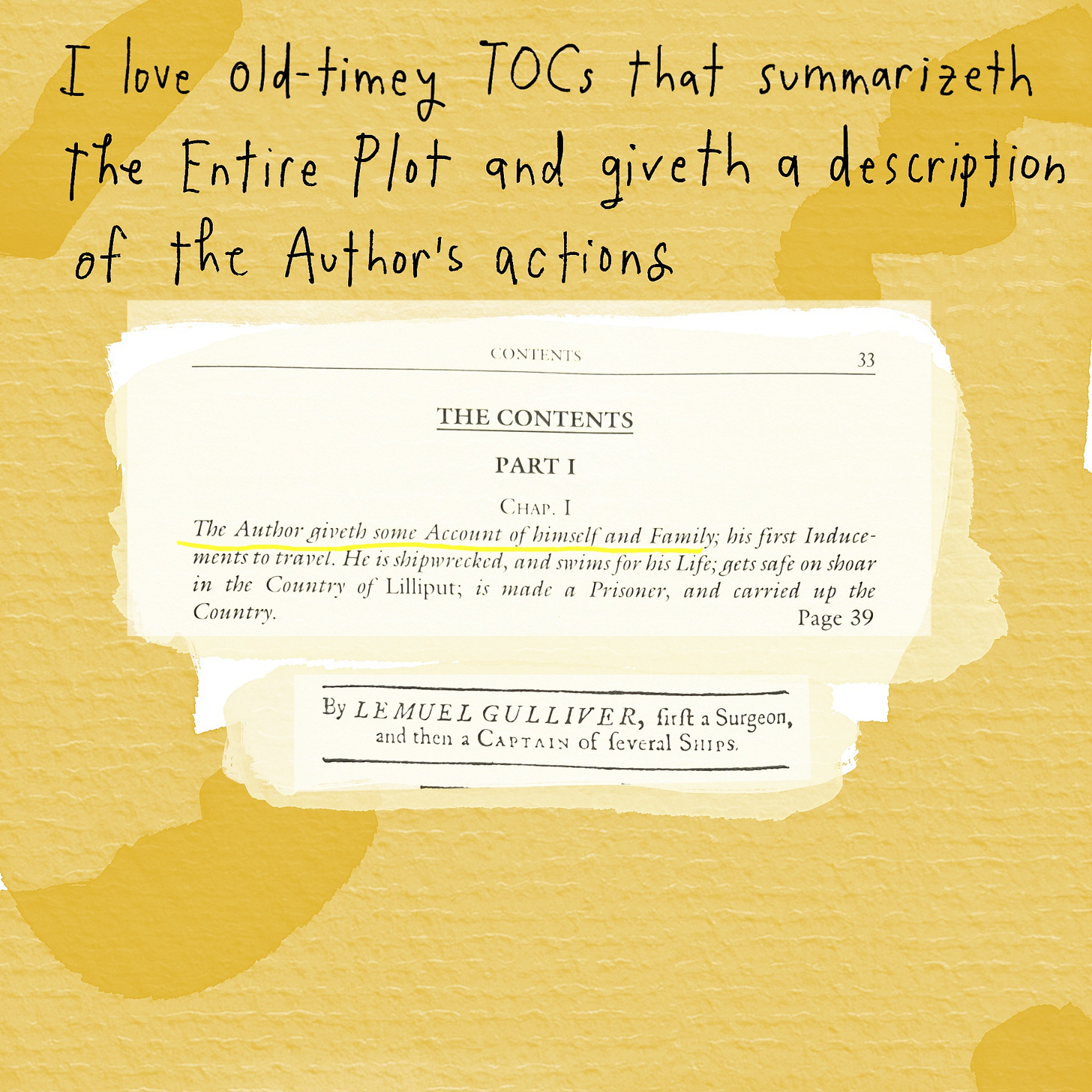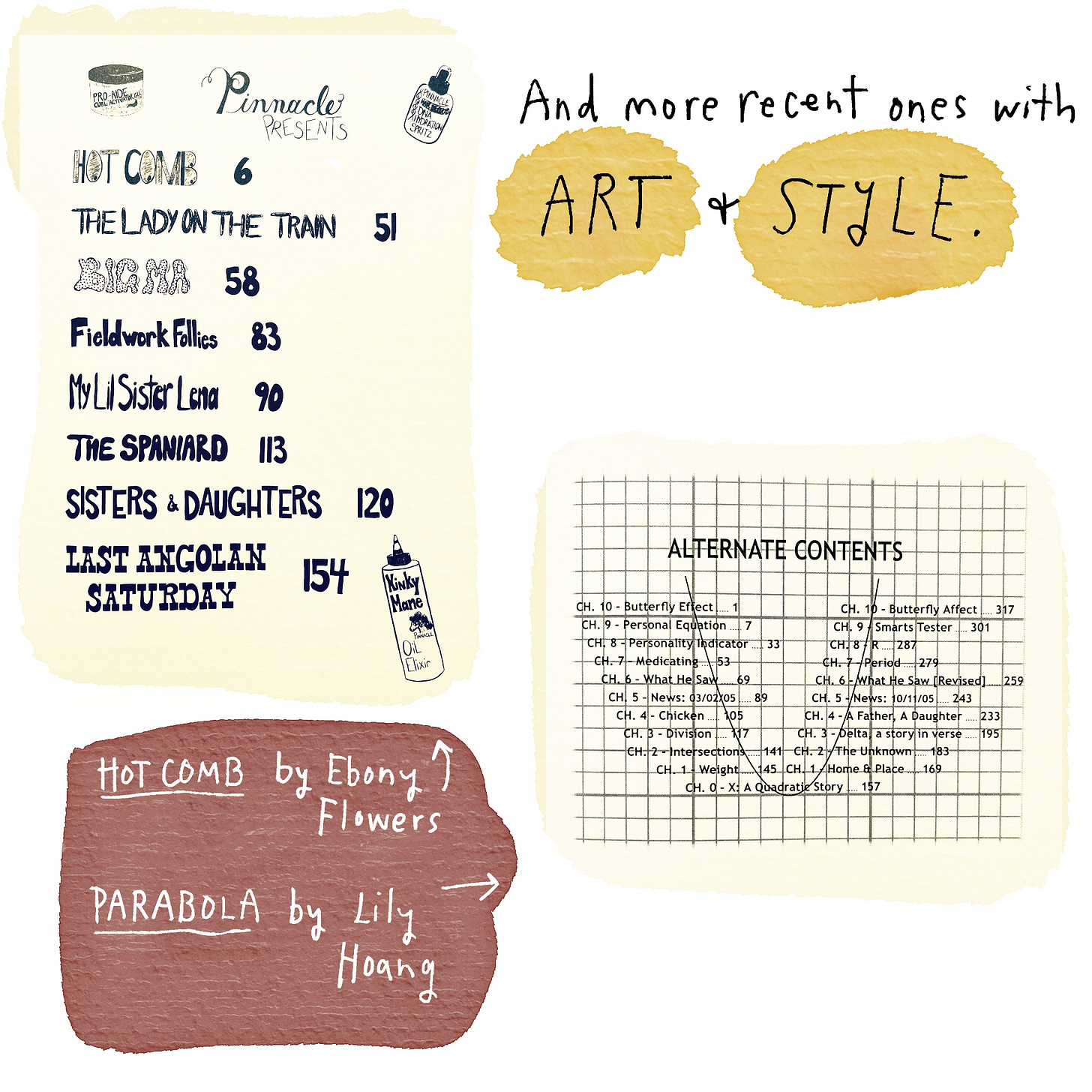I have a love language, and it is artistic, intentional, playful FRONTMATTER.
I’m talking title pages, half-title pages, copyright pages, epigraphs (sometimes), dedications, and, oh yes, the table of contents. They are so necessary and functional that no one expects them to be interesting. When they are it’s just a delight.
Last week in my creative nonfiction workshop, my students wrote some terrific “hermit crab” essays, so-called because they borrow the form, shape, or language of another type of writing—e.g. a letter, an encyclopedia entry, a court order. In a way, experiments in frontmatter are doing a similar thing: drawing on the form and language of dedications and title pages to subvert expectations. What I especially appreciate about it is that the author is starting the book, greeting the reader, before they’re “supposed to.” The frontmatter is the domain of the publisher, and I like when the author takes over, like she can’t wait to say hello to the reader. I know there can be some tired, winky-wink postmodern aspects of it, but I for one like when an author makes use of every opportunity to communicate and to invite readers into the experience of the book.
This is one of many reasons I can’t stand reading on Kindle, btw, because the first thing it does is BYPASS THE FRONTMATTER. I like to read even regular old frontmatter, and I don’t like Kindle assuming I don’t.
Anyway, I loved making all the frontmatter for my graphic memoir, THE KEEPER, out in two weeks. :)











Love it. My husband makes fun of me for reading every page of a book, including the frontmatter. I have a deep love for Acknowledgments as well.
I’m all for the contents page too!